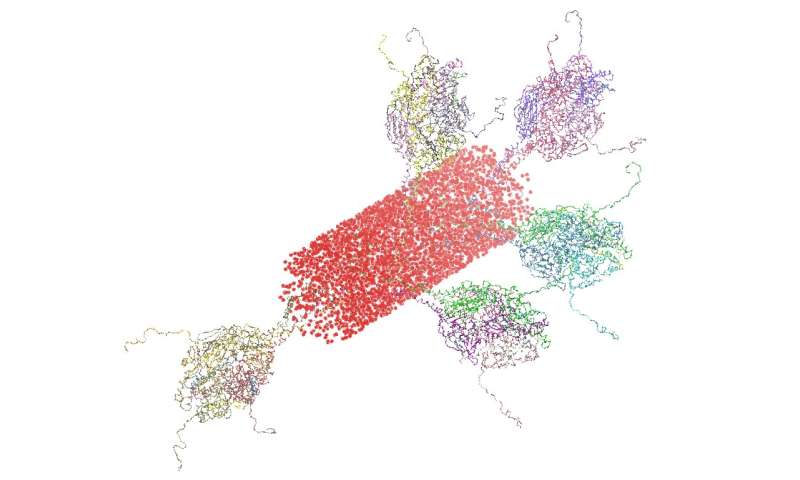
No approved vaccine exists for RSV, a life-threatening virus that attacks the respiratory system. State-of-the-art neutron and X-ray scattering performed at the National Institute of Standards and Technology (NIST) may bring one closer to reality, as the results have clarified the structure of a tiny protein-based particle that is a candidate vaccine’s main functional ingredient.
The findings, published Dec. 15 in the journal Molecular Pharmaceutics, underscore the value of neutron methods for revealing the 3-D shape and function of nanoparticles that can be useful as medicines. Understanding the structure of the prospective nanoparticle vaccine could provide important insights into how it functions inside the body. The research, conducted at the NIST Center for Neutron Research and Material Measurement Laboratory, could benefit both the further development of this candidate vaccine and a range of other medical treatments.
“Getting a faithful view of our vaccine nanoparticles allows us to ‘see’ the particles as our immune system sees them,” said Ernie Maynard, a research scientist who performed the work as a member of the team at Novavax, the company that is developing the vaccine. “Understanding the structure on a molecular level helps us understand how our nanoparticles elicit a reaction from the immune system against RSV.”
RSV, or respiratory syncytial virus, is a common cause of lower respiratory tract infections and a leading viral cause of severe lower respiratory tract disease in infants and young children worldwide. In the U.S., RSV is the leading cause of hospitalization of infants and, globally, is second only to malaria as a cause of death in children under one year of age.
The company’s candidate vaccine is built around a nanoparticle constructed of proteins, lipids and sugars. It is small enough that its shape defies accurate visualization by optical microscopes. However, NIST’s neutron and X-ray scattering capabilities allowed the particles to be visualized while in solution, as they would be when delivered to the body. The research revealed that each particle resembles a cylinder made of lipids that has several protruding limbs. These limbs are the proteins that interact with our immune system.
“What you really want to do is deliver that protein because that’s what stimulates the immune system to generate antibodies against it,” said NIST’s Susan Krueger, the paper’s first author. “But the particle containing the protein is not a rigid structure. It also has thousands of variations—sometimes it has more protein limbs than others, and they’re arranged in different ways. What you want to know is how it looks in solution, in the real world.”
Traditionally, scientists assess the structure of proteins by crystallizing them and illuminating the crystals with a beam of X-rays. For crystals to form efficiently, the proteins need to adopt similar conformations, forming ordered arrays that promote crystal growth. However, biological molecules and therapeutic proteins often exhibit different shapes or conformations and are very difficult to crystallize. Due to the strong forces of crystallization, these protein crystals may contain proteins forced into shapes that do not naturally exist or reflect real-world conditions. These factors can hide the true picture of what’s happening.
“The experiments allowed us to visualize the RSV nanoparticle vaccine as it exists in solution in the syringe. This approach offers advantages over X-ray crystallography, where the sample would be analyzed in a frozen crystalline state,” Maynard said. “Analysis like this may speak to why this vaccine platform induces a robust immune response—the immune system sees all kinds of subtleties and flexibility that it can use to generate antibodies.”
Other companies have developed treatments built around nanoparticles as well, including a vaccine in clinical trials for the SARS-CoV-2 virus that causes COVID-19. Maynard said the approach used in the study could prove useful more broadly for analyzing the complex molecules used in these products.
Source: Read Full Article
